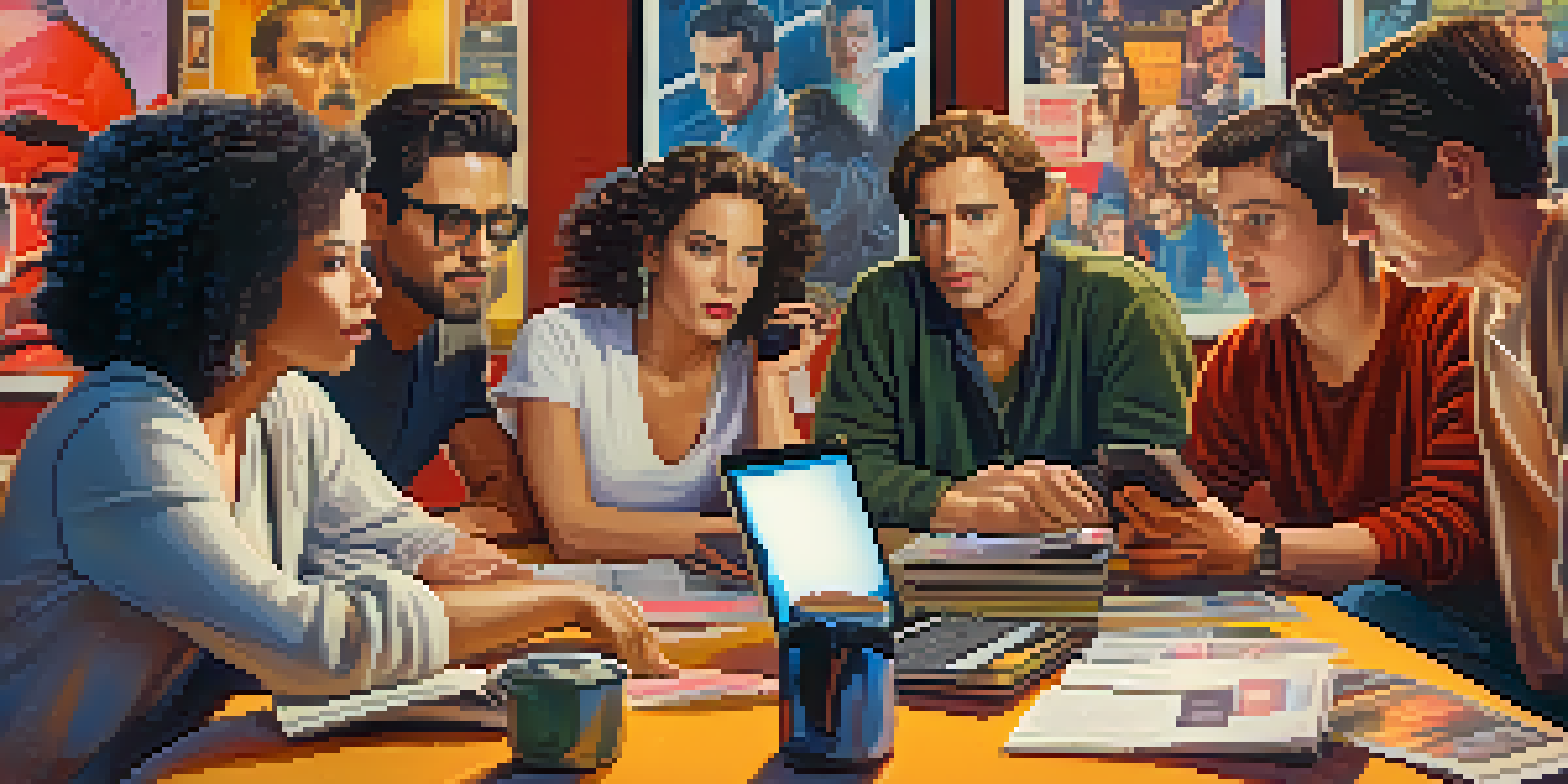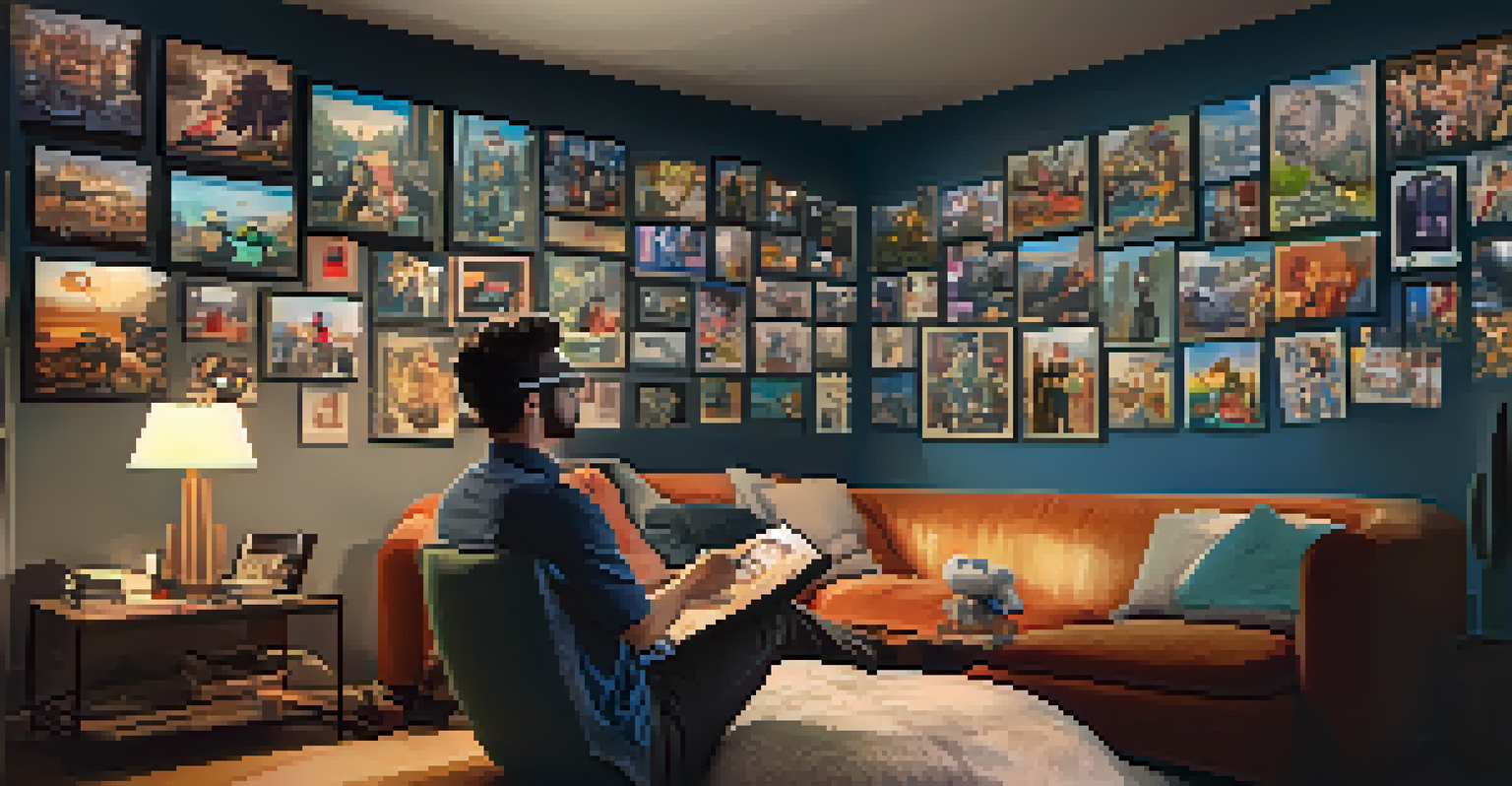Technology's Role in Shaping Future Film Criticism Trends

The Rise of Digital Platforms in Film Criticism
In recent years, digital platforms have revolutionized film criticism. With the rise of blogs, YouTube channels, and social media, anyone can share their thoughts on the latest releases. This democratization of film criticism means that diverse voices can now participate in conversations that were once dominated by traditional critics.
The future belongs to those who believe in the beauty of their dreams.
Moreover, platforms like Rotten Tomatoes and Letterboxd allow audiences to engage with films and critics alike. Users can rate films, write reviews, and interact with each other, creating a community of film lovers. This shift encourages a more inclusive environment where different perspectives can flourish.
As more viewers turn to these digital spaces for guidance on what to watch, film critics must adapt their approaches. Embracing these platforms can help critics reach wider audiences, making their insights more relevant in an evolving cinematic landscape.
The Impact of Social Media on Film Criticism
Social media has become a powerful tool for film critics, allowing them to share reviews instantly. Platforms like Twitter and Instagram enable critics to provide real-time reactions to films, creating buzz and discussion among followers. This immediacy can influence audience perceptions and box office performance.

Additionally, social media facilitates dialogue between critics and fans, breaking down barriers that once existed. Critics can engage in conversations with their audience, responding to comments and adapting their viewpoints based on feedback. This interaction fosters a sense of community and connection that enhances the film-watching experience.
Digital Platforms Empower Critics
The rise of blogs and social media has democratized film criticism, enabling diverse voices to engage in discussions once dominated by traditional critics.
However, this also comes with challenges, as critics may feel pressure to conform to popular opinions. Balancing personal insights with audience expectations can be tricky, but it ultimately enhances the richness of film criticism in the digital age.
The Role of Artificial Intelligence in Film Reviews
Artificial intelligence (AI) is making waves in various industries, and film criticism is no exception. Algorithms can analyze vast amounts of data, identifying trends and patterns that may inform reviews. This technology can help critics understand audience sentiment and preferences more effectively.
Innovation distinguishes between a leader and a follower.
For instance, AI can assist in generating summaries or highlighting key themes in films, providing critics with valuable insights. While some may worry about the authenticity of AI-generated content, it can serve as a tool to enhance human critique rather than replace it.
As AI continues to evolve, its role in film criticism will likely expand. Critics who embrace this technology can use it to support their analyses, making their reviews more informed and relevant in a rapidly changing industry.
The Influence of Streaming Services on Film Criticism
The rise of streaming services like Netflix and Amazon Prime has transformed how films are consumed and critiqued. With an endless catalog of films readily available, critics now have to navigate a more extensive landscape. This abundance can lead to diverse opinions as audiences explore lesser-known works alongside mainstream hits.
Streaming platforms also provide unique opportunities for critics to analyze content. With the ability to binge-watch series or revisit films easily, critics can delve deeper into storytelling techniques and character development. This richer context allows for more nuanced critiques and discussions.
AI Enhances Film Review Insights
Artificial intelligence is being utilized to analyze audience sentiment and trends, providing critics with valuable data to inform their reviews.
Moreover, the trend of releasing films directly to streaming services challenges traditional release models, prompting critics to rethink their evaluation criteria. As the industry evolves, so too will the standards and expectations of film criticism.
The Shift Towards Video Critique Formats
Video critiques are becoming increasingly popular, as platforms like YouTube and TikTok allow critics to convey their insights visually. This format caters to a generation that favors quick, engaging content over lengthy written reviews. Video critiques can incorporate clips, visuals, and even humor, making them more accessible and entertaining.
This shift also encourages critics to develop their presentation skills, blending analysis with performance. Engaging storytelling and charismatic delivery can significantly impact how audiences receive critiques, ultimately shaping their film-watching choices.
While some may argue that video critiques lack depth compared to written reviews, they offer a fresh perspective on film analysis. Critics who master this medium can reach younger audiences and foster a new appreciation for film criticism.
The Future of Film Criticism: Trends to Watch
As technology continues to evolve, several trends are emerging in film criticism that warrant attention. For instance, the integration of augmented reality (AR) and virtual reality (VR) could reshape how critics review films, offering immersive experiences that enhance understanding. Imagine stepping into a film's universe while reading a critique!
Additionally, the growing importance of diversity and representation in film will likely influence criticism. Critics will need to reflect on these themes as they evaluate films, ensuring that their analyses encompass a broader range of perspectives. This shift will enrich the discourse around films and promote inclusivity.
Video Formats Reshape Critique Style
The popularity of video critiques on platforms like YouTube encourages critics to combine analysis with engaging visuals, appealing to modern audiences.
Overall, the future of film criticism promises to be dynamic and multifaceted. By embracing technology and adapting to changing audience preferences, critics can continue to play a vital role in shaping the cinematic landscape.
Embracing Change: How Critics Can Adapt
To thrive in this evolving landscape, film critics must be willing to embrace change. This means staying informed about new technologies and trends while remaining true to their unique voices. Adaptability will be key as the industry continues to shift beneath their feet.
Additionally, critics should explore new formats and platforms to reach audiences. Whether it’s writing for a blog, creating video content, or engaging on social media, diversifying their approach can help critics remain relevant. This willingness to experiment can lead to exciting new opportunities.

Ultimately, the most successful critics will be those who can balance tradition with innovation. By honoring the art of critique while embracing technology, they can ensure their insights continue to resonate with audiences for years to come.